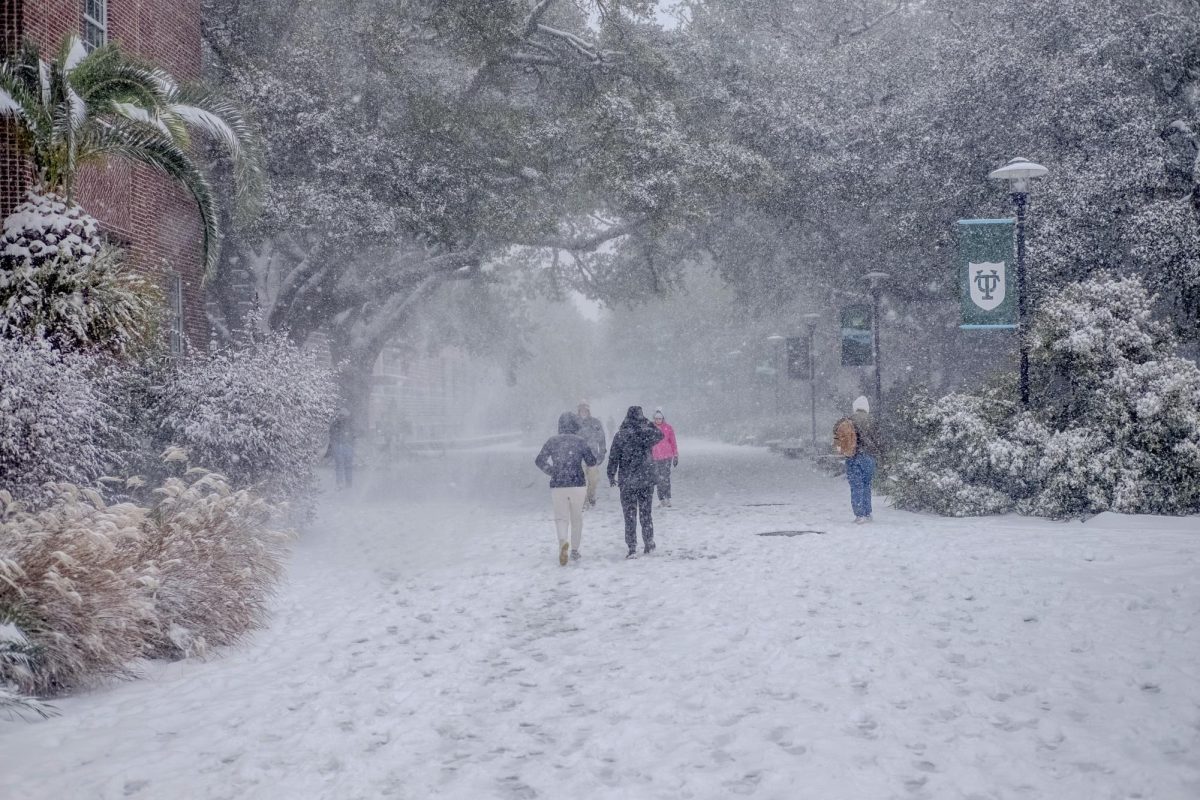Layers of snow blanketed the quads, and frigid temperatures took the city by storm on Jan. 21. The storm was unexpected and exciting for Tulanians, as that much snow hadn’t touched New Orleans since 1963. In the days that followed, sheets of slippery ice covered campus, making simple transportation treacherous. Road conditions were hazardous as New Orleans barely housed the necessary materials to clear the snow.
Desperate for some snacks and sustenance, my roommate and I decided to walk to The Boot Bar and Grill Store – one of the only locations operating and providing food. We carefully shuffled across the quad – our plastic rain boots slipping on thick ice. After several wipe-outs, we reached The Boot Store, only to find a line of desperate Tulane students trailing out the door. The shelves were essentially empty, leaving only nutrition bars, bottles of wine and a scarce selection of chips and candy.
In the few days preceding the storm, the only food options available on campus were the Malkin Sacks Commons, The Boot Store and sometimes PJs Coffee on Willow Street. For many students, these options required a trek across campus with dangerous conditions for walking and driving. There were no opportunities to use Wave Bucks on campus, and no food options in the Lavin-Bernick Center for University Life. Food delivery services like Uber Eats and DoorDash were not doing deliveries in the New Orleans area. Restaurants across the city were temporarily shut down due to the storm.
It is understandable that many food locations were not operating, as workers could not easily commute to their jobs. Despite this, a more solidified plan could have been established in preparation for the extensive lack of food options. A food distribution system, like the one used during Hurricane Francine, could have been implemented to provide substantial meals to students, rather than the assortments of snacks offered before the snowstorm.
Additionally, the Quick Eats self-checkout convenience store near the Small Family Collaboration Hub could have opened sooner. Although it officially opened on Jan. 28, it could have been expedited to provide a food option that does not require workers.
Tulane University could have advised students to purchase food ahead of time at nearby grocery stores like Rouses to prepare for the lack of options. This would have been helpful for students living off-campus or with a functioning kitchen to prevent transportation difficulties. But it still might not have been beneficial for on-campus students whose dorms only contain a small fridge and lack kitchen resources.
The limited food options available on Tulane’s campus have become a pattern. During sorority rush week, which occurred before the official semester began, there was an extreme lack of food options. For over a week, one of the only food sources for hundreds of potential new sorority members was a trip to the Commons for a $10 Wave Bucks fee. Also, sorority active members had to arrive on campus before this to prepare for rush week. During this time, the Commons and all campus food options were not operating. My friends and I spent a considerable amount of money ordering Uber Eats on a nightly basis when sororities did not provide food.
These issues call for a change in the Tulane food distribution system during unprecedented times. It is always critical to provide students with substantial food options and devise systems that prepare for and deal with unexpected weather issues.




